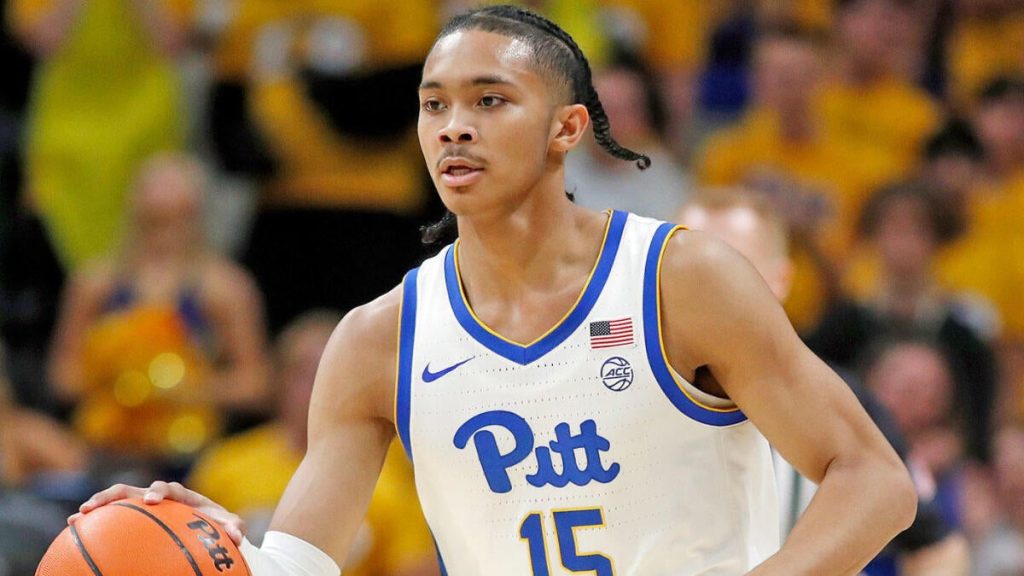College basketball is currently abuzz with a pressing question: are players transferring for basketball opportunities or financial gains? The influx of multi-million-dollar deals in the 2025 transfer portal cycle has complicated the decision-making process for players balancing their athletic aspirations with lucrative offers.
Should athletes prioritize life-changing financial opportunities or pursue the best fit for their skills? Is it possible to find a balance between the two?
This issue is complex and multi-faceted.
Historical examples show that the right fit can determine the success of a transfer. For instance, the move of JT Toppin to Texas Tech appeared to be an ideal match last summer and exceeded even the highest expectations. Toppin not only secured the Big 12 Player of the Year award, but he also led Texas Tech to the Elite Eight, and rumors suggest he earned around $4 million to return for another season.
On the flip side, the transfer of Danny Wolf to Michigan faced skepticism. However, thanks to Dusty May‘s strategic vision, Wolf and teammate Vlad Goldin developed into a formidable duo. Wolf is now projected to be a first-round selection in the 2025 NBA Draft, largely due to his decision to trust May’s innovative approach.
The struggle of navigating the transfer portal continues, but numerous top-tier transfers have already committed to teams. The roster decisions made in April can significantly influence the performance of transfers in the upcoming season. While talent remains crucial, factors such as coaching and team dynamics are more important than ever. Some teams have made wise choices in whom they recruit, and these acquisitions promise to yield positive results. Below, we highlight why these selections were smart moves for both teams and players.
1. Jaland Lowe’s Potential for a Performance Surge
Transfer Information: From Pitt to Kentucky
Analyzing the Fit: When Otega Oweh transferred to Kentucky, he had several offensive weaknesses; however, he achieved a career-best offensive efficiency there. Similarly, Lamont Butler also transformed positively upon joining Kentucky.
The arrival of Lowe, a talented player coming off a challenging sophomore year at Pitt, could solidify his position as one of the best point guards in the Southeastern Conference (SEC) if his trajectory continues. Kentucky’s roster has evolved significantly, featuring more players capable of creating their own shots while reducing reliance on spot-up shooters.
2. The Intriguing Dynamics of Bryce Hopkins
Transfer Information: From Providence to St. John’s
Analyzing the Fit: Bryce Hopkins has been sidelined for an extended period, having played only four games since early 2024, which obscures his remarkable potential when healthy.
Some of Rick Pitino’s most successful teams excelled at drawing fouls, and Hopkins’ knack for getting to the free-throw line could greatly benefit a St. John’s team that struggled in halfcourt offense last season. At 6-foot-7 and 220-pounds, he provides versatility as a forward, allowing for a bevy of offensive strategies to maximize his skill set.
3. Rob Wright: BYU’s Solution at Point Guard
Transfer Information: From Baylor to BYU
Analyzing the Fit: BYU required a guard who could penetrate the paint, and acquiring Rob Wright was a strategic move. Nearly half of his shots in the past year came from within the rim, making him an ideal fit for BYU’s dynamic offense.
Wright’s ability to operate effectively in a secondary role alongside the talented AJ Dybantsa will allow him to focus on orchestrating pick-and-roll plays while benefiting from BYU’s assortment of sharpshooters and lob threats. This partnership has the potential to optimize Wright’s capabilities and address his weaknesses, creating a promising outcome for both the player and the team.
READ MORE: Nine slam-dunk transfer portal fits



